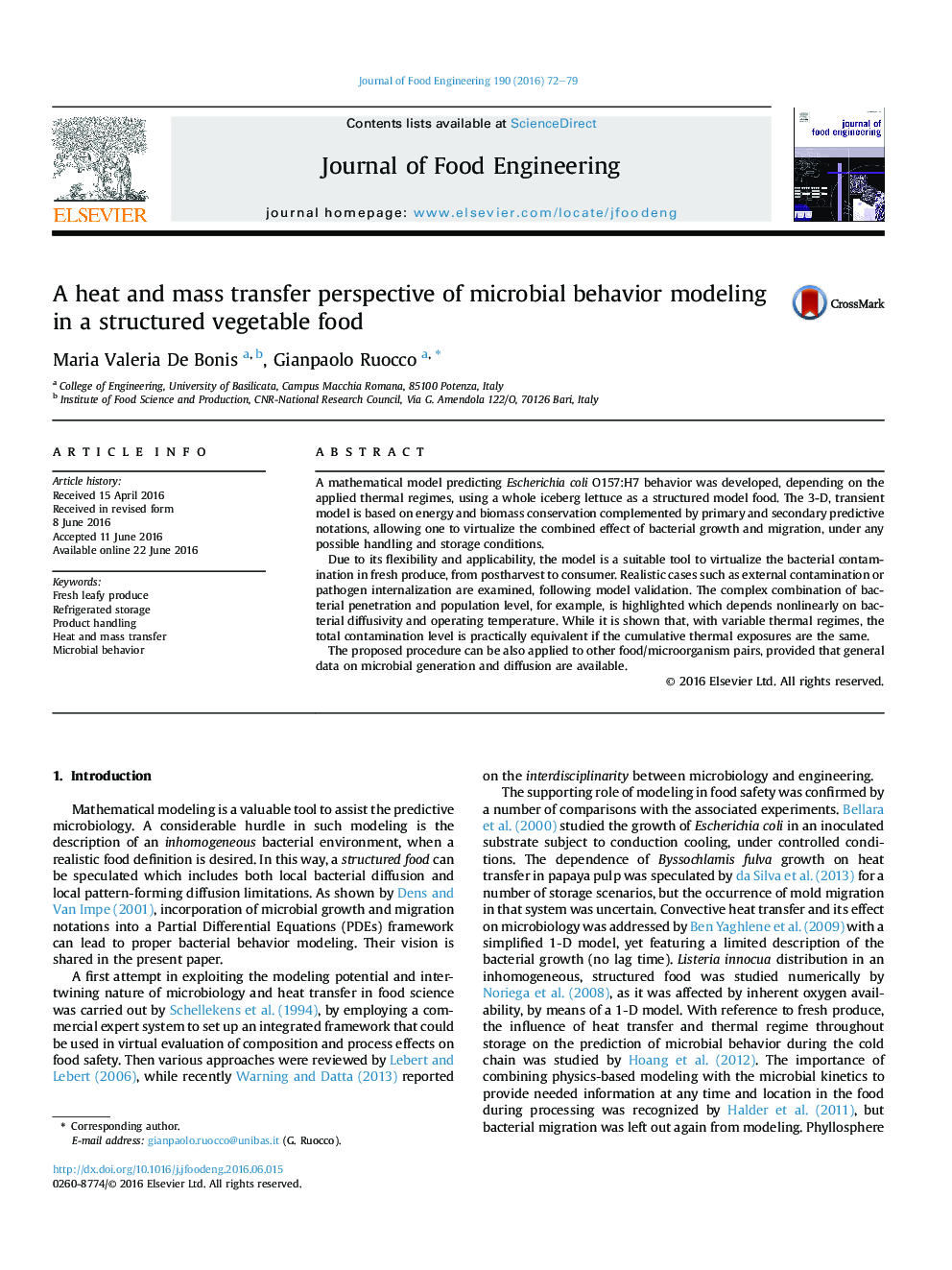| کد مقاله | کد نشریه | سال انتشار | مقاله انگلیسی | نسخه تمام متن |
|---|---|---|---|---|
| 222565 | 464278 | 2016 | 8 صفحه PDF | دانلود رایگان |
• A mathematical model predicting Escherichia coli O157:H7 behavior in a whole iceberg lettuce was developed.
• Due to its flexibility and applicability, the model is a suitable tool to virtualize the bacterial contamination in fresh produce, from postharvest to consumer.
• An application example: external contamination at constant temperature. Virtualized distribution of E. coli cell population x (∖logCFU/g) for two values of external temperature Te and for a bacterial diffusivity D = 1.10–10 m2/s, after Δt=10Δt=10 h and when an initial contamination xi = 4.8 logCFU/g is considered on the external leaf. Left: Te = 10 °C; right: Te=25 °C.
A mathematical model predicting Escherichia coli O157:H7 behavior was developed, depending on the applied thermal regimes, using a whole iceberg lettuce as a structured model food. The 3-D, transient model is based on energy and biomass conservation complemented by primary and secondary predictive notations, allowing one to virtualize the combined effect of bacterial growth and migration, under any possible handling and storage conditions.Due to its flexibility and applicability, the model is a suitable tool to virtualize the bacterial contamination in fresh produce, from postharvest to consumer. Realistic cases such as external contamination or pathogen internalization are examined, following model validation. The complex combination of bacterial penetration and population level, for example, is highlighted which depends nonlinearly on bacterial diffusivity and operating temperature. While it is shown that, with variable thermal regimes, the total contamination level is practically equivalent if the cumulative thermal exposures are the same.The proposed procedure can be also applied to other food/microorganism pairs, provided that general data on microbial generation and diffusion are available.
Journal: Journal of Food Engineering - Volume 190, December 2016, Pages 72–79
